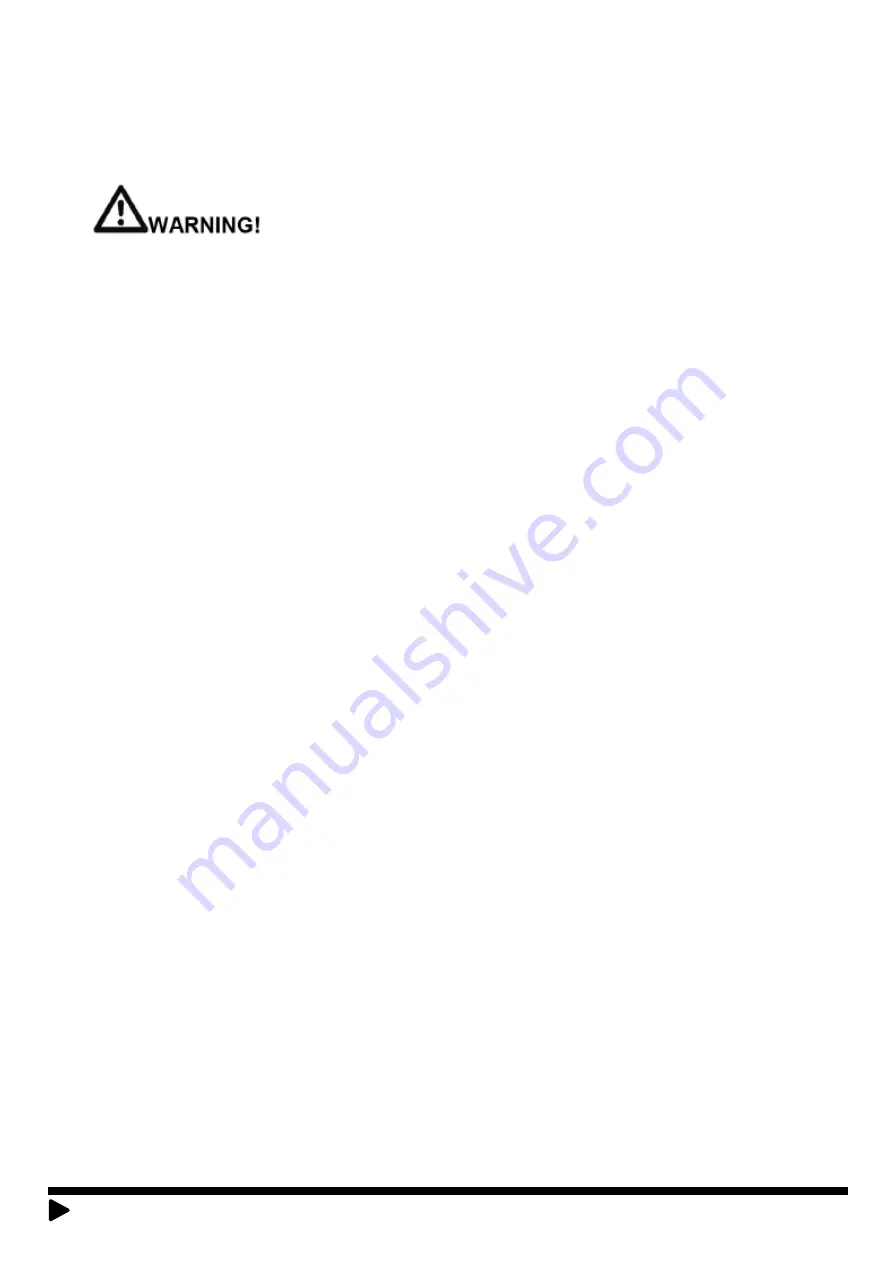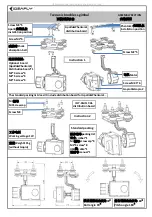
WWW.TMGINDUSTRIAL.COM
14 / 33
Toll Free:1-877-761-2819
Excavation
When operating the backhoe, smoothness of technique should be strived for at all times. Smoothness will come with
experience and practice at feathering the controls. Establish a flowing digging cycle to increase operator efficiency and save
unnecessary wear on the machine. Observe the following points to obtain the best results and to fully utilize the digging force
of the backhoe.
Check the prospective digging area for hidden utility lines before operating the backhoe or when in doubt of their location,
contact the local utility companies. When operating the backhoe in an area where utilities are expected to be present, throttle
the backhoe down and proceed with caution. If you feel the backhoe bucket made contact with anything out of ordinary, stop
digging at once. Have the obstruction checked by hand. If a utility line has been damaged, contact the affected utility at once.
Preparing for Excavation
Before any excavating is started, it is always a good idea to plan out the job first. Various things need to be considered and
taken into account prior to the actual digging. The operator should inspect the job site and take notice of any potential
hazards in the area. He should have a complete understanding of the tasks he is expected to perform. Figure out what will be
done with the spoil (excavated soil), will it be used to backfill or be moved out? What is the soil conditions like? Will you have
to work around others? Etc. Once you have become familiar with the job site and understand the job requirements, it is time to
set up for the actual digging. Position the backhoe in such a way as to minimize repositioning the unit and to maximize
digging efficiency. Consider the replacement of spoil and position the backhoe to be able to dig the maximum amount of soil,
accurately, while leaving enough room for the spoil removed to be piled in the desired area.
Once the unit is positioned, lower the stabilizers to the ground. The tires should still be supporting most of the vehicle weight
with the stabilizer relieving only part of the weight, and mainly acting to give the unit a wider base for increased stability and to
keep the unit from moving or bouncing with backhoe use. The front end loader should also be lowered if the unit is so
equipped. The vehicle should at no time be supported by the stabilizers and loader with any of its wheels off the ground.
Severe damage to the vehicle could result. When operating the unit on a delicate surface (such as concrete, or stone work) or
on sandy, loose, or soft ground place plywood under the stabilizers to help distribute the load over a wider area.
Warm Up
Warm up actions before initial backhoe operation. Fully raise and lower the boom, dipperstick, swing and stabilizers two or
three times. Fully raise the bucket from the ground and operate the bucket cylinders couple of times, lower the bucket. Check
the tractor hydraulic oil level and correct it if necessary.
Front weight
Due to the hydraulic power and weight of the backhoe, it may be desirable to place additional weight for stability on the front
of the tractor. To achieve the full efficiency of the backhoe, it is necessary to know the correct angle for digging. At initial
contact with the ground, the boom and the dipperstick should be positioned at an angle for best penetration. The boom and
dipperstick should not be extended in a straight line.
Basic digging technique
When starting an excavation, make the first cut of each section shallow, being careful to follow the exact layout of the
excavation. The reason for the shallow cut is to minimize damage to the sod and to facilitate replacement.
These first cuts are also important because they will act as guides for the remaining cuts, thus getting the first few cuts as
accurate as possible will help in keeping all future cuts accurate.
When digging with the backhoe, extend the boom, dipperstick and bucket out, away from the operator. Lower the boom and
dipperstick to start the digging process. The bucket teeth should be at a 30° to 45° entry angle. As the digging starts, curl the
bucket until the cutting edge is level with the horizon. Crowd the bucket in toward the operator working the bucket lever to
keep the bucket level. As the bucket moves toward the operator, manipulate the boom lever to keep the cut level. At the end of
the digging cycle, crowd the dipper out and completely curl the bucket while lifting it from the excavation. Once you have
cleared the excavation, swing the bucket to the spoil pile. Start to dump the bucket before the pile is approached. Once the
bucket is empty, swing the unit back to the excavation, positioning the bucket and dipperstick for the next cut in the process.
The whole digging process should be one smooth cycle that is repeated until the excavation is completed. When the
excavation has been dug to within 15 cm of the finished bottom, clear and touch up the sides of the excavation. Use the flat
















































